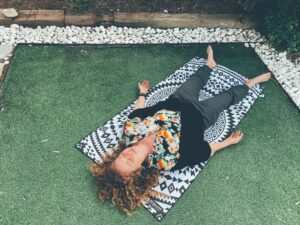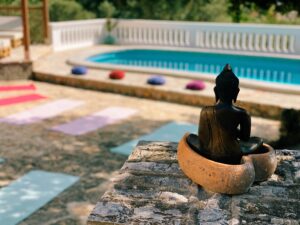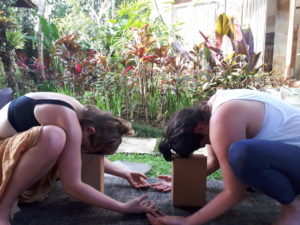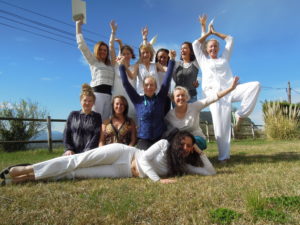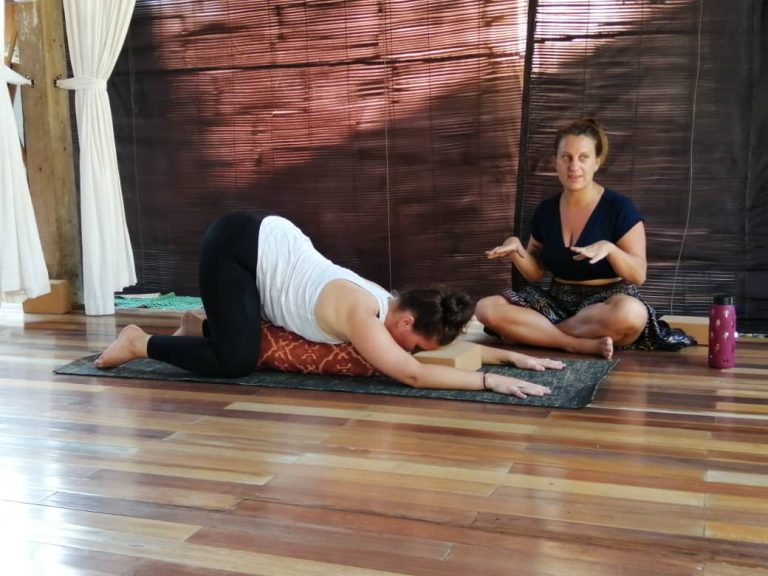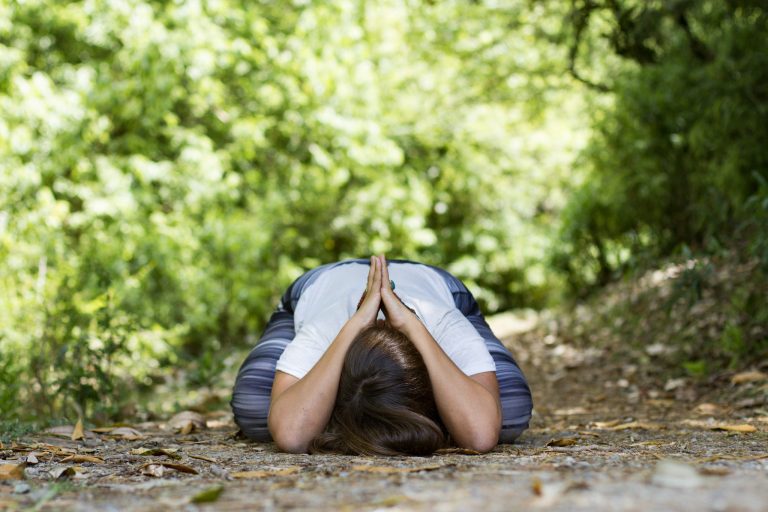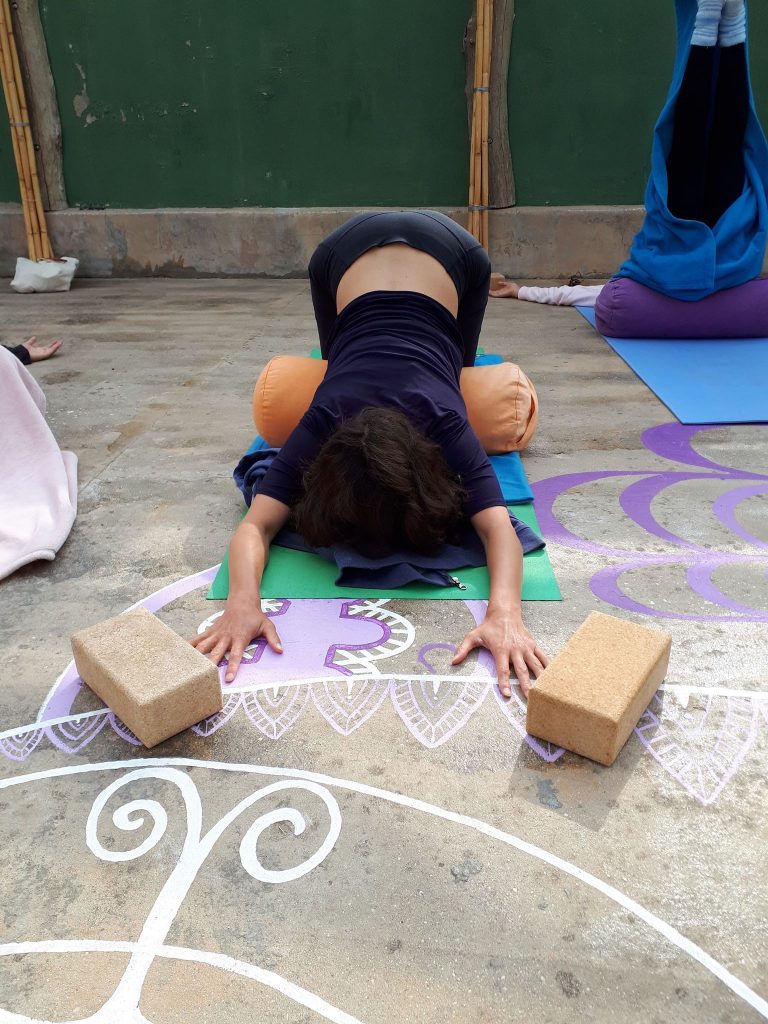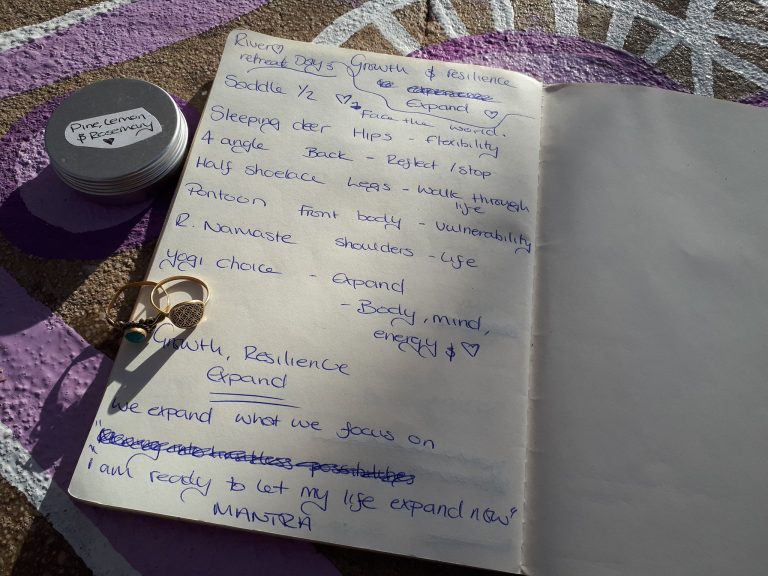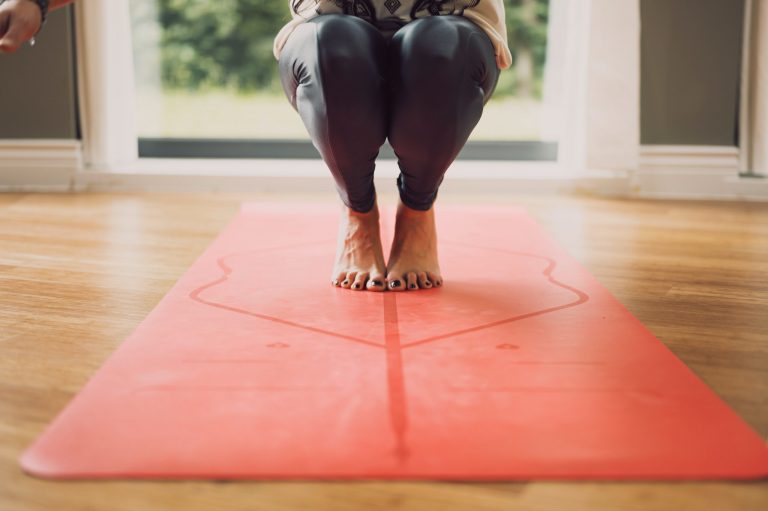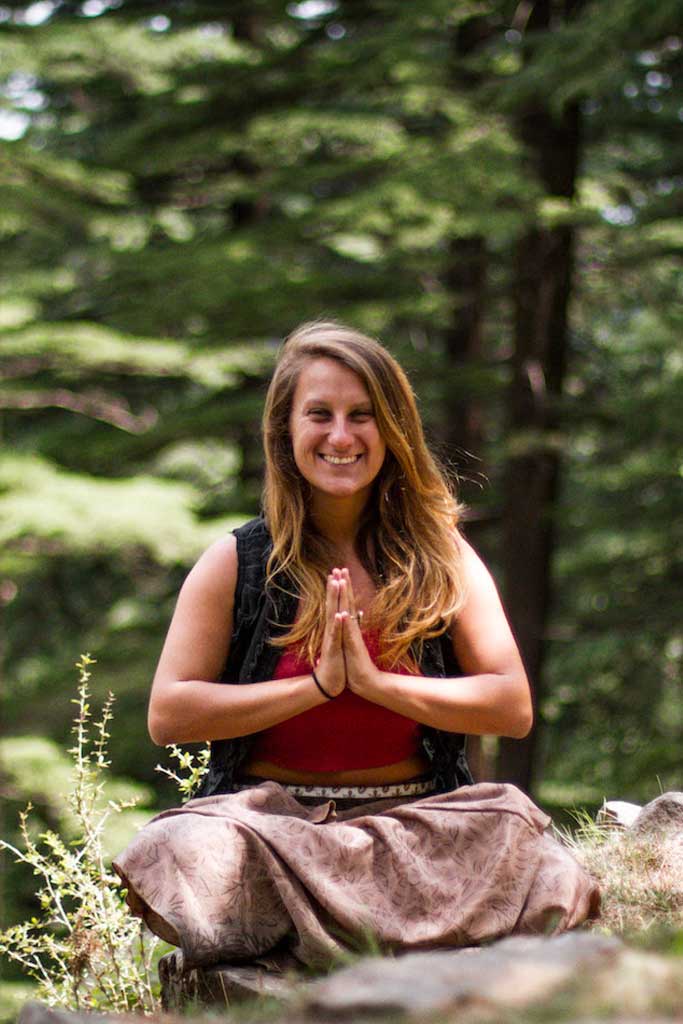What is a Rebound in Yin Yoga?
By Anna Caldwell
The rebound is perhaps one of the most important components of a Yin Yoga practice. This is the space where the benefits are felt and reaped, while allowing for deep relaxation of the practitioner. Whether you are a seasoned practitioner/teacher or thinking about training in Yin Yoga to teach or deepen your own practice, it is important to understand this vital aspect of Yin.
So, what is the rebound? A rebound is what fills the space between each asana in the practice. Moving from one asana to the next is done by gently transitioning into and out of a savasana (corpse pose) either on the back or on the stomach, whichever makes the most sense for ease and relaxation from the previous asana. For example, after an asana such as Crushed Wings, one might opt to take the rebound on their stomach by simply sliding forward into the prone position. In a Yin Yoga practice, we have many different layers—physical, mental, energetic and so on. The rebound is important for assimilating the benefits into and from each of these layers.
The Physical Layer
From a physical standpoint, a Yin Yoga practice is focused on myo-fascial release and accessing the yin tissues of the body. These are the tissues that are dense, harder-to-reach and do not normally receive attention in yang-style Hatha practices. These tissues have lower levels of elasticity and do not stress easily, which is why they are often injured or pulled in sporting activities. For this reason, postures are held for longer periods in Yin Yoga to place stress on the tissues over time, followed by a resting rebound period for one to two minutes.
In the rebound, deep relaxation can occur as the practitioner drops into the lower brainwave states that so famously characterize Yin Yoga. However, this is not all that is happening. In this resting time of one to two minutes, the connective tissues “rebound” and rehydrate after the gentle stress placed on them throughout the duration of the posture. The rebound allows the practitioner to release this stress gently and slowly and in this way, the connective tissues that wrap our muscles and form our joints can be released safely from the intense simulation of the asana.
The Mental Layer
When we come out of the asana and into the rebound, we are coming into complete stillness. In this stillness we can study what is happening into our bodies with a mind that is free to observe whatever it is that is happening in our inward experience. The body speaks to us through the language of sensation and without the intensity of pushing our edge in the asana, we can receive this information with a clearer mind and understand how we reacted to the shape. Were we frustrated or relaxed? Did our body feel good or did it feel tight and constricted? Was our breath smooth and relaxed or frantic and shortened? Do these previous answers have any correlation to our mental state? The rebound provides a platform for us to investigate the quality of our mind during the practice. It is a place of stillness in which we can notice how we really are without judgement or intellectualizing that which we find.
The Energy Layer
We may feel any number of things in our body during the rebound. It might simply feel like relief from the intensity of the asana, it might feel like release from the chaotic thoughts that the asana stimulated, or it might be the time in which our mind drops into a true state of meditation. There is no one way it should look or feel on any particular day, so we do not worry if there is a lot or a little going on any particular day. The roots of Yin Yoga can be found intricately linked with those of Chinese Medicine, particularly with the concept of Qi. Qi is the life force that permeates our body. Qi is what governs all movement in the body. Yin Yoga stimulates the flow of Qi throughout the body via the many meridian lines spanning our subtle energetic system.
Yin Yoga is a practice that calls for deep introspection while creating time and space to study the layers of Self. Our practice is a time to embody that which is yin, an exercise in acceptance and surrender as we slow down from our lives and turn towards the inward space. When we tune into the sensations in the body, we understand the benefits of the practice. Our tissues and fascia rehydrate in the rebound and the Qi moves through our body as our practice moves from the physical to more subtle, energetic realms. We relax fully and deeply into the present moment, knowing that there is nowhere to go and nothing to do but be in our bodies as they are in this particular moment. The rebound allows us the time to move into the sensations we are experiencing and understand–on both a conscious and subconscious level–the benefits of this practice. Yin Yoga presents us the time and space to be present with our bodies, our mind and our spirit. The space that the rebound creates are vital to receiving the benefits both physically and energetically.
If you are interested in learning more about Training in Yin Yoga, Chinese Medicine and Functional Anatomy, and how all of this fits into Yin Yoga, Shanti Atma Yoga offers a variety of trainings exploring the many avenues to self-healing, teacher development and deepening your yoga practice:
Yin Yoga Teacher Training Online:
Yin Yoga Teacher Training: 100 hour Functional Anatomy and Chinese Medicine
Yin Yoga Teacher Training: 100 hour Pranayama, Meditation and Mindfulness
Yin Yoga Teacher Training: 80 hour Yin Yoga and Yoga Nidra
Yin Yoga Teacher Training: 50 hour Neuroplasticity and Mindfulness
Yin Yoga Teacher Training: 50 hour Essential Oils and Emotional Intelligence
Residential Yin Yoga Teacher Training:
Yin Yoga Teacher Training: 100 hour Functional Anatomy and Chinese Medicine
Yin Yoga Teacher Training: 100 hour Pranayama, Meditation and Mindfulness
Yin Yoga Teacher Training: 80 hour Yin Yoga and Yoga Nidra
Yin Yoga Teacher Training: 50 hour Neuroplasticity and Mindfulness
Yin Yoga Teacher Training: 50 hour Essential Oils and Emotional Intelligence
Yin Yoga Teacher Training: 200 hour 5 Bodies Approach
Locations:
Yin Yoga Teacher Training Bali
Yin Yoga Teacher Training Thailand
Yin Yoga Teacher Training India
Yin Yoga Teacher Training Spain
Yin Yoga Teacher Training Australia
Yin Yoga Teacher Training Guatemala

